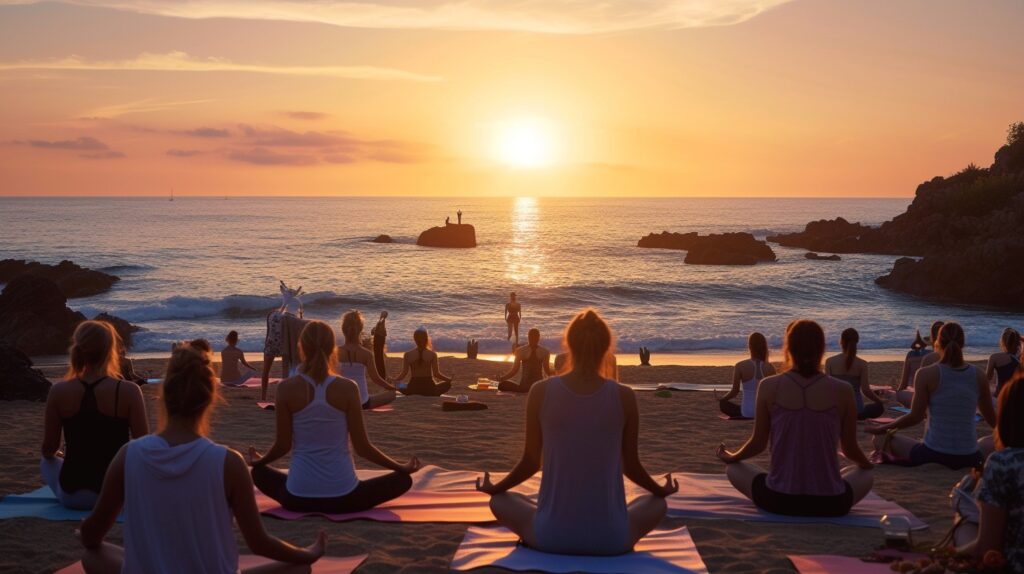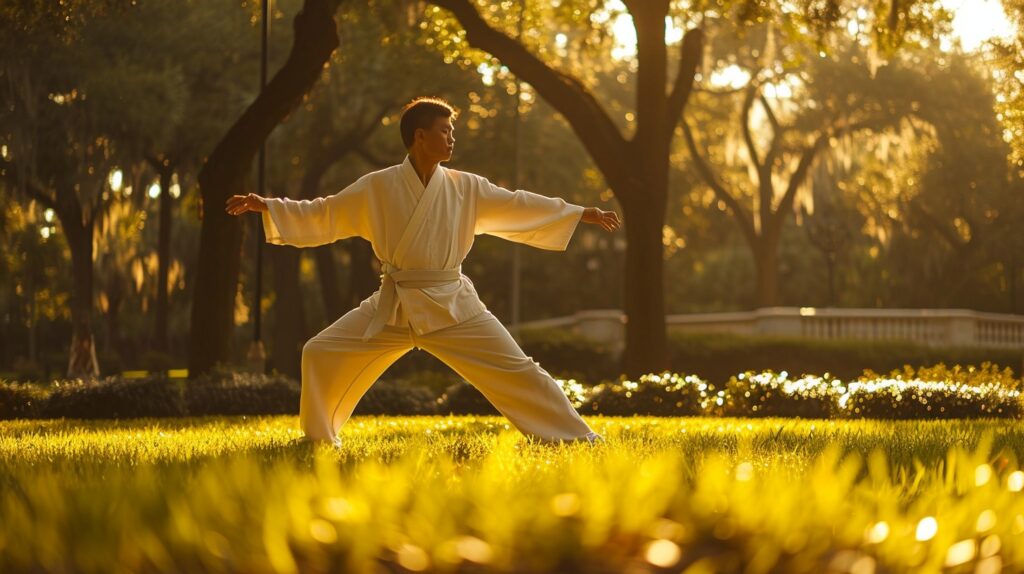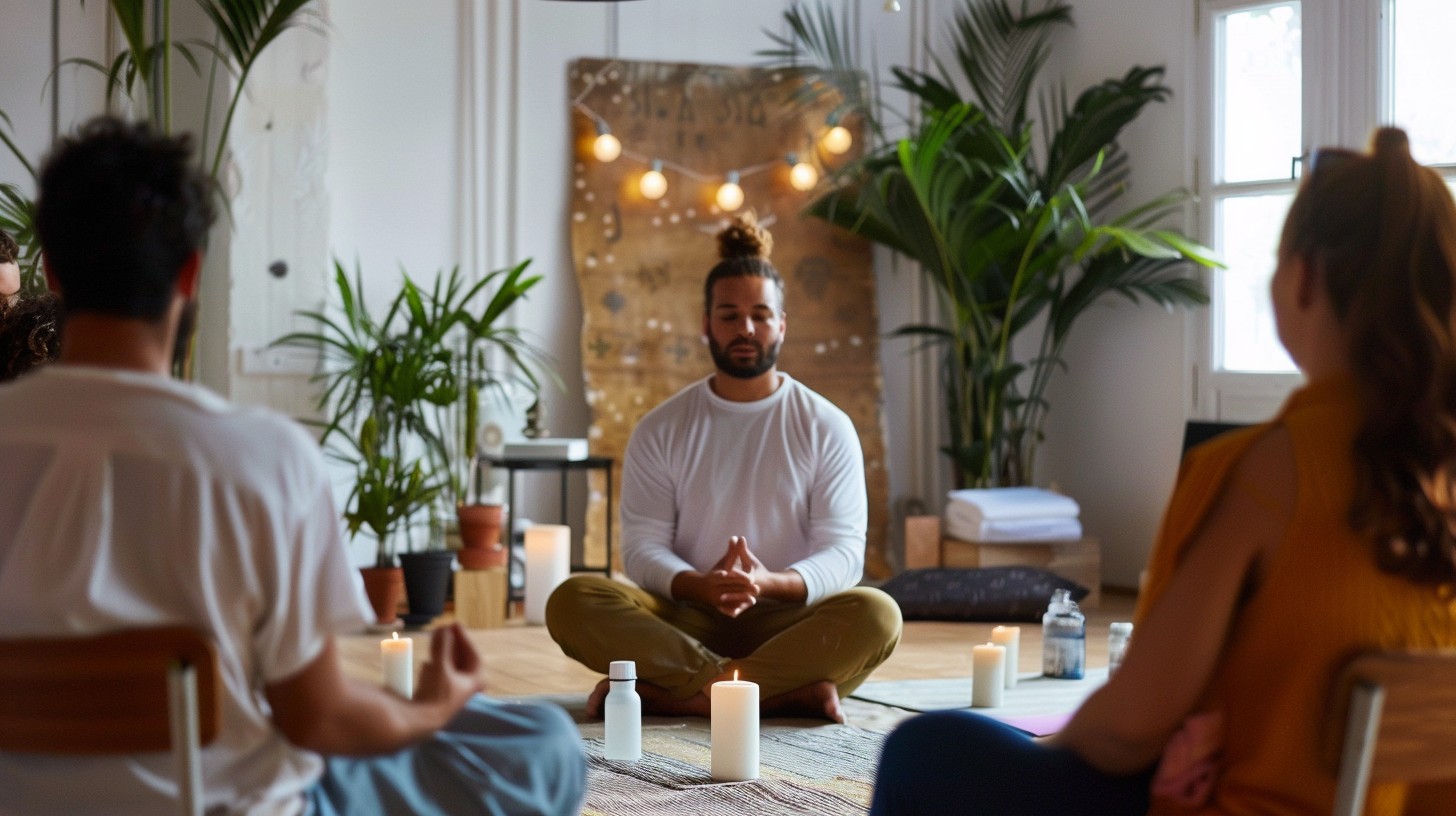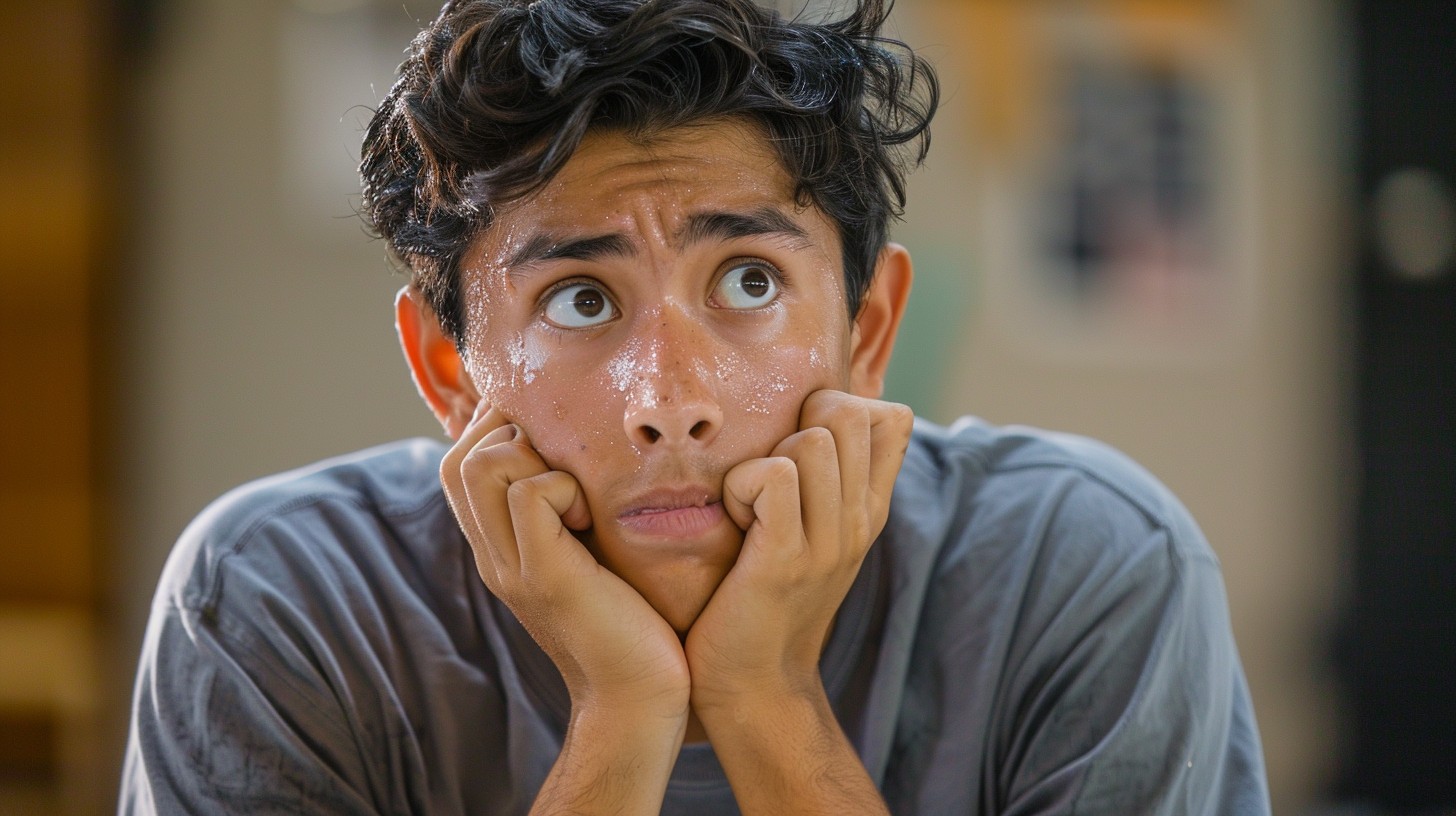In our fast-paced world, stress can hit at any moment, whether from work, family, or unexpected life challenges. Fortunately, there are quick relaxation techniques that can help reduce stress instantly. Whether you’re looking for fast relaxation techniques to unwind after a long day or exercises to help manage anxiety, these eight relaxation methods will help you feel calm and centered in just minutes.
Why Quick Relaxation Techniques Matters
Daily stress, if left unmanaged, can lead to long-term health problems like anxiety, depression, or heart disease. Integrating relaxation techniques into your routine is crucial for maintaining both mental and physical health. The best part? Most of these exercises are easy to perform anywhere, making it easier for you to relax quickly whenever stress arises.
1. Breathing Exercise to Reduce Stress
Deep breathing exercises are a fundamental method to reduce stress almost instantly. Focusing on slow, controlled breaths helps activate your body’s relaxation response, slowing your heart rate and easing muscle tension.
How to Do It:
- Find a Quiet Space: Look for a calm and tranquil environment where you won’t be disturbed. This could be a cozy corner of your home, a peaceful park, or any place that helps you relax. Sit comfortably in a chair or on the floor with your back straight and shoulders relaxed.
- Inhale Slowly: Close your eyes if you feel comfortable. Take a deep breath in slowly through your nose for a count of 4. Focus on filling your lungs completely, feeling your belly expand as you do so.
- Hold Your Breath: After inhaling, hold your breath for a count of 4. During this pause, try to center your thoughts and maintain a sense of calm.
- Exhale Gently: Slowly exhale through your mouth for a count of 6. Imagine releasing any tension or stress as you breathe out, feeling lighter with each breath.
- Repeat: Continue this breathing pattern for 5–10 minutes. If your mind wanders, gently bring your focus back to your breath, allowing yourself to fully engage in this soothing practice.
This breathing exercise to reduce stress is simple yet incredibly effective in soothing both your mind and body. By focusing on your breath, you can create a sense of calm and relaxation that helps alleviate tension and anxiety.
2. Progressive Muscle Relaxation (PMR)
Progressive muscle relaxation is a technique that involves systematically tensing and then relaxing different muscle groups throughout the body. This practice not only helps to release physical tension but also promotes a profound sense of mental calmness, making it an excellent method for reducing overall stress levels.
How to Do It:
- Begin with Your Toes: Start at the tips of your toes and gradually work your way up to the top of your head. This methodical approach helps ensure that you don’t miss any areas of tension.
- Tense Each Muscle Group: For each muscle group, consciously tense the muscles for about 5 seconds, focusing on the sensation of tension. For example, curl your toes tightly or clench your fists.
- Release the Tension: After tensing, slowly release the tension while taking deep, calming breaths. As you exhale, visualize the stress leaving your body.
- Continue the Process: Move up your body systematically, working through your calves, thighs, abdomen, arms, shoulders, and neck, until you’ve gone through your entire body.
This technique provides a full-body relaxation experience and enhances your ability to manage stress effectively. It is particularly beneficial during times when stress feels overwhelming, helping you to cultivate a sense of peace and well-being. Regular practice can lead to improved mental clarity and a greater ability to cope with daily challenges.
3. Deep Breathing Exercises for Stress Relief
Deep breathing exercises are a powerful variation of focused breathing techniques specifically designed to alleviate stress and anxiety. This method has gained immense popularity as a fast relaxation technique, and for good reason: it’s incredibly effective and requires only a few minutes to achieve significant benefits.
How to Do It:
- Find a Comfortable Position: Lie flat on your back on a soft surface, like a yoga mat or a bed, or sit in a comfortable chair with your feet flat on the ground. The key is to ensure your body is supported and relaxed.
- Hand Placement: Place one hand on your chest and the other on your abdomen. This positioning helps you become more aware of your breathing patterns and ensures that you are engaging your diaphragm.
- Inhale Deeply: Breathe deeply through your nose, taking in air slowly and allowing your abdomen to rise as you inhale. Focus on filling your lungs completely, feeling your belly expand as you draw in the breath.
- Exhale Slowly: Exhale gently through your mouth, allowing your shoulders and abdomen to relax as you release the air. Try to make your exhalation longer than your inhalation, which can help to further activate your relaxation response.
- Repeat: Continue this process for 5–7 minutes, focusing on the rhythm of your breath. If your mind wanders, gently bring your attention back to the sensation of your breath moving in and out of your body.
This practice not only promotes relaxation but can also be incredibly helpful in managing anxiety and panic attacks. By consistently incorporating deep breathing exercises for stress relief into your daily routine, you can build resilience against stress and enhance your overall mental health.
4. Visualization: Fast Relaxation Techniques
Visualization is a powerful mental exercise that allows you to picture yourself in a peaceful, tranquil setting. By mentally transporting yourself to a serene environment, you can effectively lower your stress levels and foster a sense of calm.
How to Do It:
- Close your Eyes: Find a comfortable position, either sitting or lying down. Gently close your eyes to minimize distractions and help your mind begin to focus.
- Imagine a Calming Place: Visualize a location that evokes feelings of tranquility and joy—this could be a quiet beach with soft waves lapping at the shore, a lush forest filled with the sounds of chirping birds, or even a serene mountaintop overlooking a breathtaking view.
- Engage your Senses: Pay close attention to the details of your imagined environment. What do you hear? Perhaps the gentle rustle of leaves or the rhythmic sound of ocean waves. What do you smell? The salty sea air or the earthy scent of pine trees? Focus on how it feels—the warmth of the sun on your skin or the cool breeze brushing against you.
- Immerse Yourself Fully: Spend 5–10 minutes fully immersed in this visualization, allowing your mind to explore and enjoy the peaceful sensations.
Visualization is an excellent quick relaxation technique that can be practiced anywhere—whether you’re at home, in a quiet office, or even outdoors. It provides a valuable escape from stressful situations, offering a brief moment of peace and clarity that can rejuvenate your mind and improve your mood.
5. Yoga for Quick Stress Relief
Yoga is a holistic practice combining gentle physical movement, intentional breathing, and meditation to reduce stress and promote overall well-being. By engaging in yoga, you can find a sanctuary from the chaos of daily life. Specific poses, known as asanas, release muscle tension, improve flexibility, and promote a sense of calm and relaxation throughout the mind and body.

How to Do It:
- Begin with Simple Poses: Child’s Pose and Cat-Cow Stretch are particularly effective for relieving stress. Child’s Pose allows for deep stretching of the back and hips, while Cat-Cow Stretch helps to loosen the spine and encourages a rhythmic flow of breath.
- Mindful Breathing: Focus on slow, deep breathing while holding each pose for a few minutes. Inhale deeply through your nose, allowing your abdomen to expand, and then exhale fully through your mouth. This deep, controlled breathing enhances relaxation and helps center your thoughts and emotions.
Incorporating yoga into your routine not only enhances physical flexibility but also fosters mental clarity and emotional resilience. Regular practice can serve as a powerful tool for managing stress and anxiety, making yoga a go-to method for maintaining balance and tranquility in today’s fast-paced world.
6. Breathing Exercises for Anxiety and Panic Attacks
For individuals grappling with anxiety and panic attacks, specialized breathing exercises can be a powerful tool to regain control over both the mind and body. By engaging in intentional breathing, you can activate your body’s relaxation response, which significantly calms the nervous system and mitigates feelings of panic. Deep breathing from your diaphragm allows for a greater intake of oxygen, grounding you in the present moment and reducing the physiological symptoms of anxiety.
How to Do It:
- Find a Comfortable Position: Sit or lie down in a quiet space where you won’t be disturbed. Ensure that your body is supported, and your posture is relaxed but upright.
- Inhale Deeply: Take a deep breath in through your nose, allowing your abdomen to rise as you fill your lungs completely. Imagine inflating a balloon in your belly.
- Hold Your Breath: Gently hold that breath for 3–4 seconds. This pause allows your body to absorb the oxygen and helps you become more aware of how your body feels.
- Exhale Slowly: Slowly release the breath through your mouth, making a soft “whooshing” sound. Focus on emptying your lungs completely, letting go of any tension as you exhale.
- Focus on Your Breath: Pay close attention to the sensation of air moving in and out of your lungs. You might find it helpful to count your breaths or visualize each breath as a wave, flowing in and out.
- Repeat for 5 Minutes: Continue this process for about 5 minutes, or until you feel a sense of calm wash over you. You can increase the duration as you become more comfortable with the practice.
Regular practice of these breathing exercises can empower you to manage anxiety more effectively, providing you with a valuable tool to navigate challenging moments.
7. Tai Chi for Stress Relief
Tai Chi is a gentle martial art that emphasizes slow, flowing movements, often described as “meditation in motion.” Originating from ancient China, this form of exercise not only enhances physical well-being but also fosters mental clarity and emotional balance. By engaging in Tai Chi, practitioners can effectively reduce stress levels while cultivating mindfulness.

How to Do It:
- Start with a Simple Tai Chi Video or Class: Begin with fundamental movements like “Wave Hands Like Clouds,” which involves shifting your weight from one foot to another while coordinating your hand movements in a fluid manner.
- Pay Attention to Your Breath: Inhale deeply through your nose as you raise your arms, and exhale smoothly through your mouth as you lower them. This conscious breathing enhances the fluidity of your movements and deepens your sense of relaxation.
Tai Chi is especially beneficial for those who prefer a more active approach to stress reduction. It allows you to engage both your body and mind, fostering a state of mental calmness while promoting flexibility, balance, and overall well-being.
8. Aromatherapy with Deep Breathing
Combining aromatherapy with deep breathing exercises enhances the relaxation process and creates a more immersive sensory experience. Scents like lavender, known for its soothing properties, and eucalyptus, with its invigorating qualities, can instantly reduce stress and promote a sense of calm. These aromas can trigger positive emotional responses, making them effective tools for relaxation.
How to Do It:
- Select a High-Quality Essential Oil: Place a few drops in a diffuser, allowing the aroma to fill the space, or apply some to a tissue for a more portable option.
- Practice Deep Breathing Exercises: Inhale slowly through your nose for a count of four, allowing your abdomen to expand, and then exhale gently through your mouth for a count of six. Repeat this process several times, letting each breath carry away tension.
Combining aromatherapy with deep breathing can seamlessly integrate with other quick relaxation techniques, such as visualization or gentle stretching, to create a more comprehensive stress-relief experience.
How to Reduce Workplace Stress: Read
Final Thoughts
Incorporating these quick relaxation techniques into your daily routine will help you manage stress more effectively. Whether you’re using deep breathing exercises for stress relief or practicing yoga, taking just a few minutes each day to relax can greatly improve your mental and physical well-being.
Breathing exercises for anxiety and panic attacks, progressive muscle relaxation, and Tai Chi are perfect for calming your mind and body. Remember, consistency is key. The more often you practice these techniques, the more adept you’ll become at managing stress in any situation.
Start today by integrating one or more of these easy stress relief exercises into your daily routine. Your body and mind will thank you.
References
- Mayo Clinic. (n.d.). Stress relief from laughter? It’s no joke.
- Harvard Health Publishing. (2018, April).Relaxation techniques: Breath control helps quell errant stress response.
- American Psychological Association. (n.d.). Coping with stress.
- Benson, H. (1975). The relaxation response.
- Kabat-Zinn, J. (1990). Full catastrophe living: Using the wisdom of your body and mind to face stress, pain, and illness.















